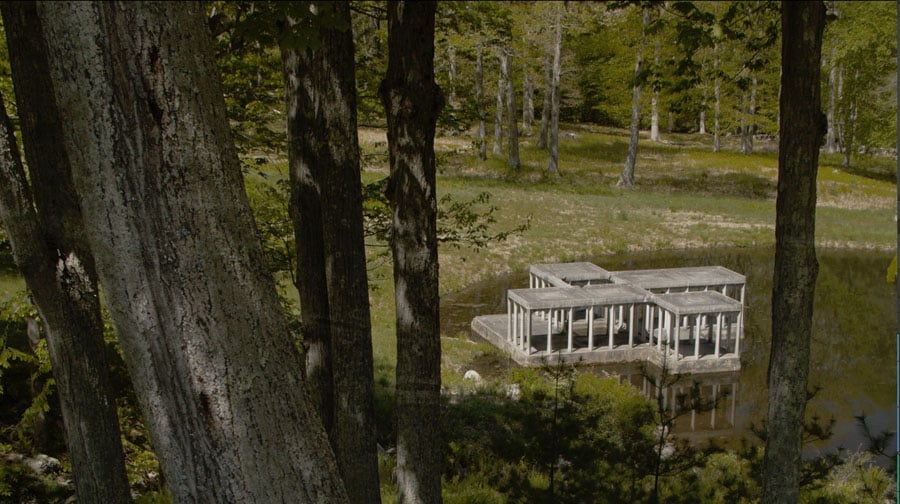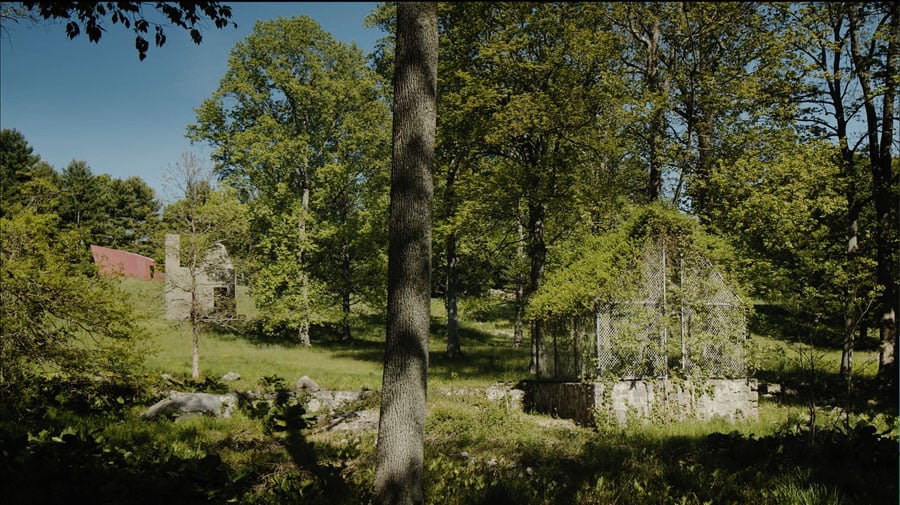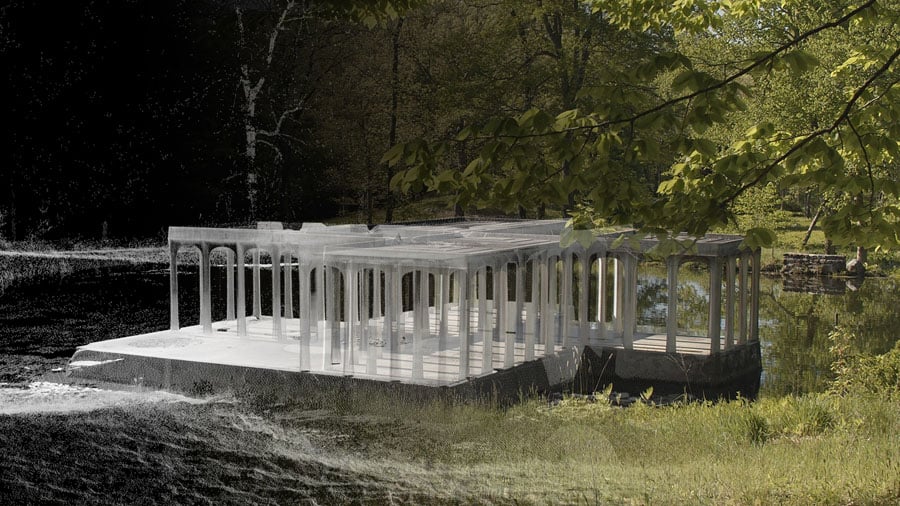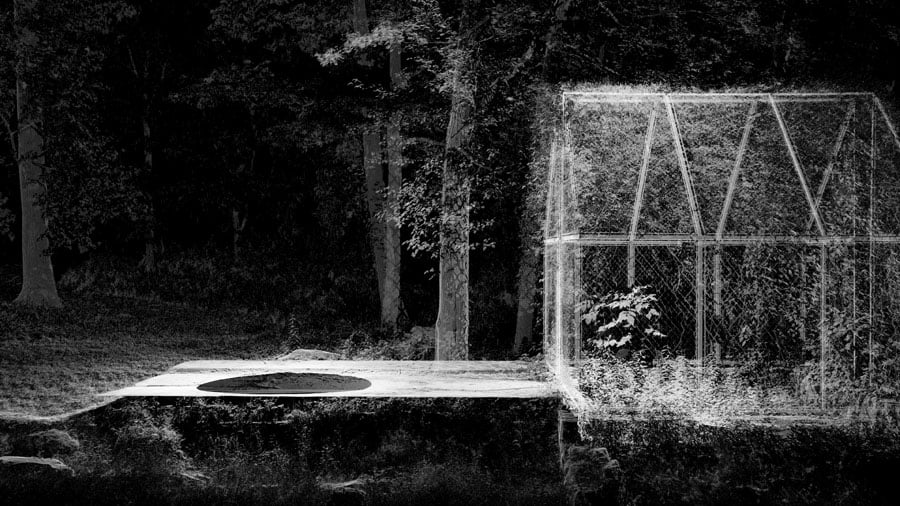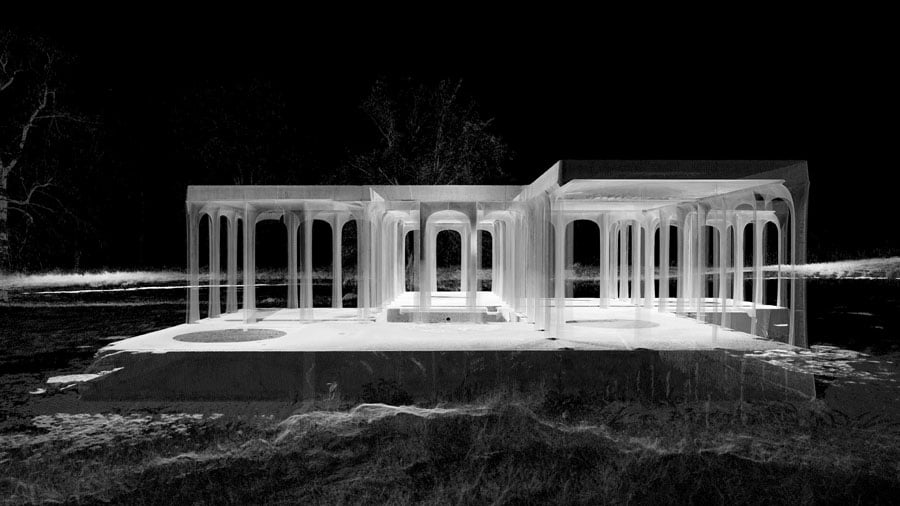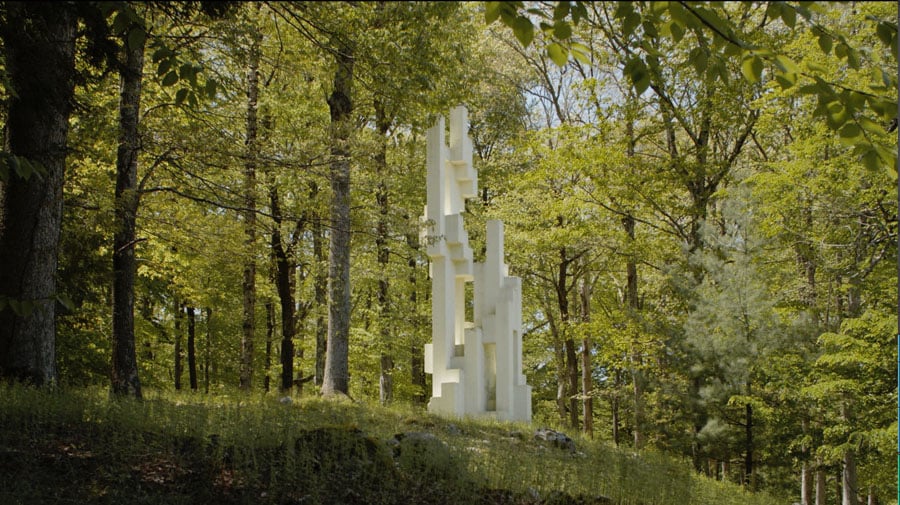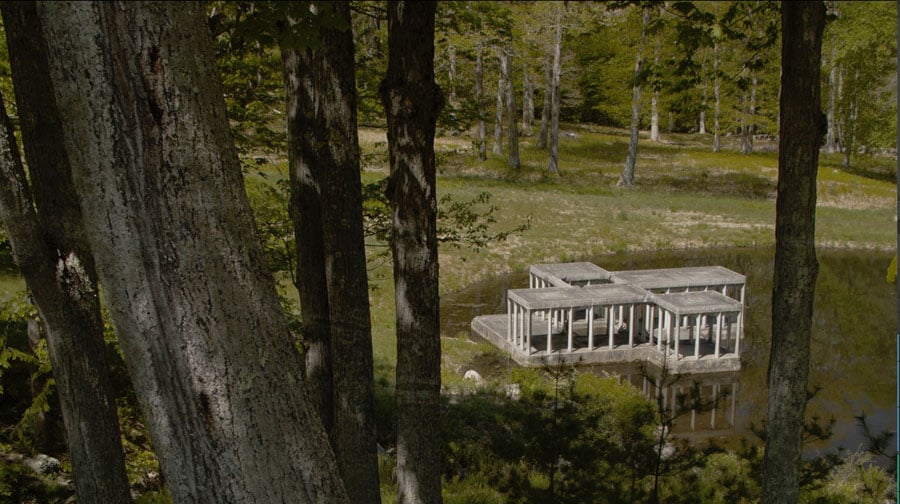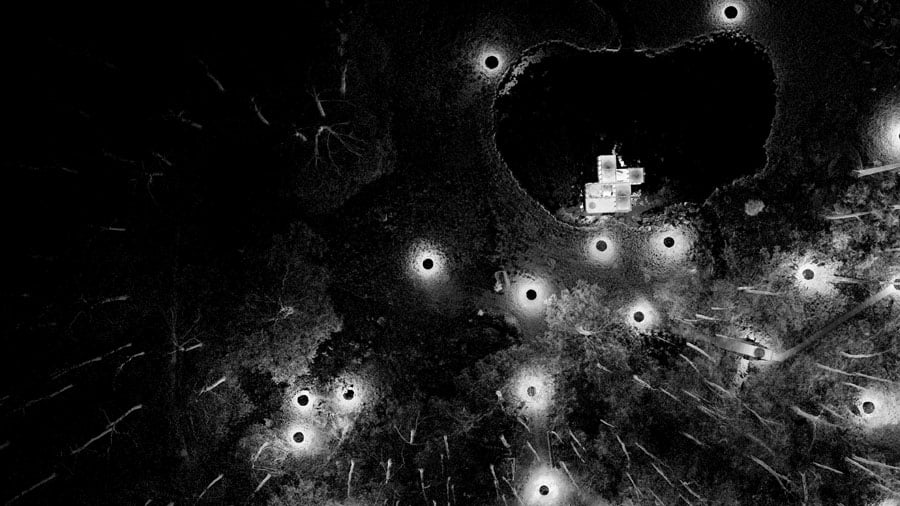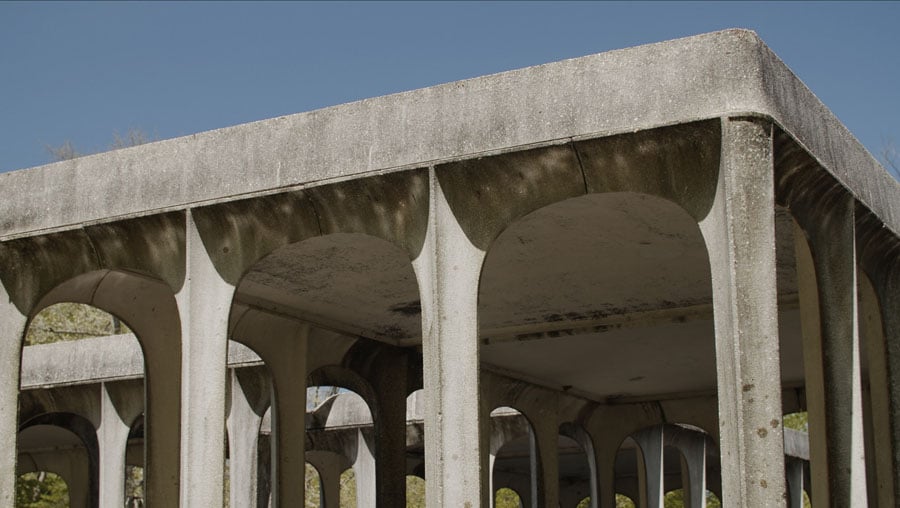
July 14, 2020
“Texture + Transparency” Takes Viewers on a Virtual Tour of the Glass House Complex
The series uses 3D laser scanning and motion-control photography to reveal new facets of the iconic estate.

Philip Johnson’s Glass House has been covered from every angle. A simple glass box surrounded by 14 other structures, this 1949 Modernist icon has since been the subject of countless case studies and reviewed by virtually every architecture editor under the sun. Seventy-one years after Johnson built it for himself—and 23 years after he donated the property to the National Trust for Historic Preservation—the topic has finally been exhausted. Or has it?
Since COVID-19 closed the door on arts, culture, and nearly every facet of normal life, the Glass House has been working with architectural photographer and filmmaker Michael Biondo and Michael Robison and Dallas Bennett of MYND Workshop to create an episodic series of short visual tours. Titled “Texture + Transparency,” the six-part program uses motion-control photography and 3D laser scanning to cast a new light on the 49-acre complex, alternating between contemplative videography and ethereal animations.
Reality capture, a form of 3D modeling, offers users a way to understand physical relationships that can’t be seen with the naked eye. Robison and Bennett, who specialize in the process, surveyed the Glass House property by placing an array of laser scanners in and around its structures, recording every detail within a 400-foot radius. (In the videos, you can guess the location of the scanners by spotting the dark circles, which illustrate the information missing from below the tripod.) Each individual scan was like a 3D mesh that MYND then pieced all together, effectively layering them to achieve the ghostly, X-ray effect pictured in the videos.
Of course, the magic of the Glass House property isn’t just the house itself, but the constellation of structures built on the landscape over decades. “Texture + Transparency” does its part to paint a portrait of the complex as a whole. The first episode, for instance, transports viewers to the Deconstructivist pavilion dubbed Da Monsta, which Johnson first envisioned as a visitor center. The following episode dives into Johnson’s workspace—a skylit, one-room library where the architect often worked surrounded by 1,400 architecture books.
The third episode looks at the subterranean gallery Johnson built to house his and his partner David Whitney’s growing collection of art. Here, Biondo and MYND reveal the hidden relationship between the underground structure and the hillside it lives in—a build that resembles Mycenaean chamber tombs. “Seeing the void between the top and the inside really conveys the sense of tomb, or memorial, that inspired Johnson in the first place,” says Robison. And in the fourth episode, Biondo’s motion control photography captures the visceral experience one feels when inside the dizzying Sculpture Gallery. “I chase the light, I try to be open to an emotive feeling, I want to show the space but at the same time I want to feel the space,” he says.

Landscape, too, plays a key role in the series. The fifth episode focuses on the architecture follies dotted around the grounds, while the series finale culminates in the Glass House itself. “The landscape is just as important as the Glass House—that’s why it’s surrounded by glass,” says Bennett. The spectral outline of the Glass House shows the structure perched on a crest overlooking the scaled-down, arched Pavilion in the Pond. “When you think of Philip Johnson, I think of a more plastic kind of design philosophy. But it’s really not; it begins and ends with the nature,” Biondo adds. “I’ve spent a lot of time on the site and I continually see something new when I’m there.”
You may also enjoy “An Online Exhibition Connects the Dots Between Performance and Architecture.”
Would you like to comment on this article? Send your thoughts to: [email protected]
Register here for Metropolis Webinars
Connect with experts and design leaders on the most important conversations of the day.
Recent Viewpoints
Viewpoints
Sustainability News Updates for Q2 2025



